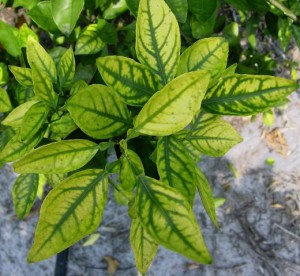
EDIS is the University of Florida’s Official website with fact sheets available to download on a wide variety of topics for free.
The University of Florida IFAS Extension offers a database of fact sheets available for free download on the Internet called EDIS (Electronic Data Information Source) that has many publications of interest to farmers and ranchers in Northwest Florida. Each fact sheet has a PDF or printer friendly link in the top left corner. The following are just a few of the new fact sheets that were recently added to the collection pertaining to commercial agriculture production. http://edis.ifas.ufl.edu
Livestock
Goat Parasite Control: General Guidelines
Gastrointestinal (GI) parasitism is the leading cause of death and decreased production in goats. At least 48% of farms in the southeast have parasites that are resistant to all classes of dewormers. While there is no one-size-fits-all recommendation for parasite control, the information in this fact sheet is provided for on-farm use. Contact your veterinarian for specific recommendations. Information was provided by Dr. Sarah Reuss of the UF Large Animal Medicine Service. This 2-page fact sheet was written by Sarah Reuss, and published by the UF Department of Animal Sciences, February 2014.
http://edis.ifas.ufl.edu/pdffiles/AN/AN29400.pdf
Intestinal and Tracheal Parasites of Poultry
A parasite is defined as an animal or plant that derives sustenance and/or protection by living in or on another animal or plant called the host. Intestinal and tracheal parasites of poultry are commonly referred to as “worms,” although this term is technically not correct. These parasites can cause chickens in a flock to appear unthrifty, which often leads to secondary complications. In some cases, the parasites can cause mortality in the flock. Frequent inspection of the flock for signs of illness is the best management tool for identifying when these parasites are a problem. This 3-page fact sheet was published by the UF Department of Animal Sciences, April 2014. http://edis.ifas.ufl.edu/pdffiles/AA/AA07800.pdf
Minimizing Honey Bee Exposure to Pesticides
Protecting honey bees and other pollinators from pesticide impacts is important to the sustainability of agriculture. Consequently, pesticide applicators must determine if there is a clear hazard to managed or wild populations of bees. Potential exposure of bees to pesticides can vary greatly depending on the type of pesticide, formulation, application method, label restrictions, and other factors. The goal in using a pesticide is to achieve maximum benefit (success) with minimum negative impact, and these factors should always be considered in pesticide selection. This publication is written (1) to help assure the sustainability of both bees and agriculture by informing beekeepers, pesticide users, and the general public about the often complex relationship between pollinators (specifically bees) and pesticides, (2) to offer guidance for improved communication between beekeepers and pesticide users, (3) to offer pollinator risk-reducing strategies for growers and other applicators when using pesticides, and (4) to provide clarity in laws, labeling, and associated definitions. This 14-page fact sheet was published by the UF Department of Entomology and Nematology, March 2014.
http://edis.ifas.ufl.edu/pdffiles/IN/IN102700.pdf
Citrus
Iron (Fe) and Copper (Cu) for Citrus Trees
Since mineral nutrition is a major factor in maximizing yield of high-quality fruit, understanding the functions of mineral elements, diagnosing nutrient deficiencies, and providing needed fertilizers are essential. This publication describes and discusses iron (Fe) and copper (Cu) deficiencies, functions, and recommended practices to alleviate nutritional problems. This 7-page fact sheet was published by the UF Department of Soil and Water Science, March 2014. http://edis.ifas.ufl.edu/pdffiles/SS/SS61700.pdf
Manganese (Mn) and Zinc (Zn) for Citrus Trees
Since mineral nutrition is a major factor in maximizing yield of high-quality fruit, understanding the functions of mineral elements, diagnosing nutrient deficiencies, and providing needed fertilizers are essential. This publication describes and discusses manganese (Mn) and zinc (Zn) deficiencies, functions, and recommended practices to alleviate nutritional problems. This 5-page fact sheet was published by the UF Department of Soil and Water Science, March 2014. http://edis.ifas.ufl.edu/pdffiles/SS/SS61600.pdf
- Friday Feature:Malone Pecan Festival Tractorcade - November 21, 2025
- October 2025 Weather Summary and Winter Outlook - November 14, 2025
- Friday Feature:The Untold Story Behind the Beef for Dinner Tune - November 14, 2025


